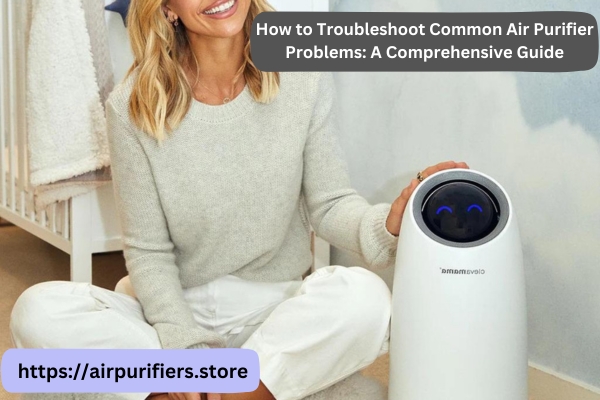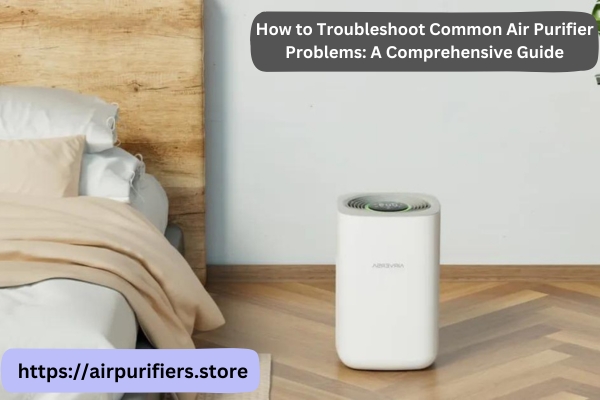How to Troubleshoot Common Air Purifier Problems
Air purifiers are valuable appliances that help improve indoor air quality by removing contaminants and allergens. However, like any electronic device, air purifiers can encounter problems that may affect their performance.
In this article, we will explore common air purifier issues and provide troubleshooting tips to resolve them effectively. By understanding and addressing these problems, you can ensure your air purifier operates efficiently, creating a healthier and cleaner indoor environment.
1. Lack of Airflow:
One common issue faced by air purifiers is a lack of airflow. If you notice reduced or weak airflow from the unit, first check if the air filters are clean and properly installed.
Clogged filters can obstruct airflow, so clean or replace them as needed. Additionally, ensure that the air purifier is placed in an open area with sufficient space around it to allow unrestricted airflow.
2. Strange Odors:
If your air purifier emits unpleasant odors, it can indicate a problem. Start by checking the filters for accumulated dirt or debris that may be causing the odor. Clean or replace the filters accordingly.
Additionally, consider using activated carbon or charcoal pre-filters, which are effective at absorbing and neutralizing odors. Regularly cleaning the unit and maintaining good indoor hygiene can also help eliminate odors.
3. Excessive Noise:
Excessive noise from an air purifier can be disruptive and indicate an underlying issue. Ensure that the unit is placed on a stable surface, as vibrations may contribute to the noise. Check if the fan or motor blades are obstructed by debris or dust and clean them if necessary.
If the noise persists, it may be a sign of a faulty motor or fan, and professional repair or replacement may be required.
4. Malfunctioning Controls or Display:
If the controls or display of your air purifier are not functioning properly, check if the unit is receiving power. Ensure that it is plugged in securely and that the power outlet is functioning correctly.
If the problem persists, refer to the user manual to determine if there are any specific troubleshooting steps or contact the manufacturer’s customer support for assistance.
5. Indicator Lights or Alarms:
Many air purifiers have indicator lights or alarms to alert users of specific issues, such as a clogged filter or the need for maintenance. If you notice any warning lights or alarms, consult the user manual to understand the specific issue and recommended actions.
In most cases, resolving the underlying problem, such as cleaning or replacing the filters, will resolve the indicators or alarms.
6. Inefficient Air Purification:
If you feel that your air purifier is not effectively removing contaminants or allergens from the air, first ensure that the unit is appropriately sized for the room. Air purifiers have recommended coverage areas, and using an undersized unit may result in inefficient performance.
Additionally, check if the filters are clean and properly installed, as dirty filters can hinder purification effectiveness.
7. Electrostatic Discharge:
Some air purifiers use electrostatic precipitators or ionizers to remove particles from the air. If you notice static shocks or a strange smell similar to burnt plastic, it could indicate an electrostatic discharge issue.
Check for any loose or damaged wires and ensure that the unit is properly grounded. If the problem persists, it’s advisable to consult a professional technician.

8. Maintenance and Cleaning:
Regular maintenance and cleaning are crucial for optimal air purifier performance. Follow the manufacturer’s guidelines regarding filter replacement schedules and cleaning methods.
Clean the exterior of the unit regularly to prevent dust buildup. Neglecting maintenance can lead to reduced efficiency and potential malfunctions.
9. Power Surges or Electrical Issues:
Power surges or electrical fluctuations can impact the functionality of your air purifier. Consider using surge protectors to safeguard your unit against sudden voltage spikes.
If you suspect an electrical issue, try plugging the device into a different power outlet or consult an electrician to ensure proper electrical connections.
10. Unusual Sounds or Vibrations:
Pay attention to any unusual sounds or vibrations coming from your air purifier. Rattling or grinding noises may indicate loose components or damaged fan blades. Turn off the unit and carefully inspect it for any visible damage. If necessary, contact the manufacturer or a professional technician for repairs or replacement parts.
11. Regular Filter Replacement:
Air purifier filters are designed to capture and trap airborne particles. Over time, these filters can become clogged with debris, reducing their efficiency. It’s important to regularly replace the filters as recommended by the manufacturer.
This not only ensures optimal air purification but also prevents strain on the motor and prolongs the lifespan of your device.
Conclusion:
Troubleshooting common air purifier problems can help optimize the performance and longevity of your device. By following these practical tips, including cleaning or replacing filters, ensuring proper airflow, addressing unusual odors or excessive noise, and understanding indicator lights or alarms, you can resolve many issues on your own. However, if problems persist or are beyond your expertise, it is advisable to seek professional assistance or contact the manufacturer’s customer support. Regular maintenance and prompt troubleshooting will help ensure that your air purifier continues to provide clean and fresh indoor air, promoting a healthier living environment for you and your family.


